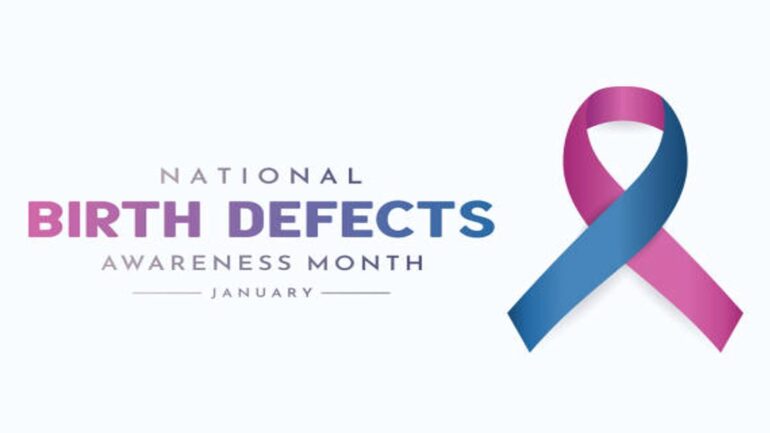National Birth Defects Prevention Month 2025: What Healthcare Leaders Should Be Watching

- Posted by Greg Wahlstrom, MBA, HCM
- Posted in Health Observance Calendar
How Maternal Health Equity, Early Detection, and Systems Planning Can Reduce Future Risk
Published: January 2, 2025
Each January, National Birth Defects Prevention Month brings needed attention to a silent public health challenge affecting one in every 33 babies born in the United States. While often framed as a clinical or neonatal issue, birth defects intersect with maternal health, health equity, and systems design in ways that demand hospital leadership engagement. As 2025 opens, healthcare executives must see this observance as more than symbolic—it’s operational.
One of the most actionable areas for executives is early detection. Health systems that embed prenatal screening protocols into obstetric care pathways improve not only patient outcomes but downstream costs. For example, March of Dimes has emphasized the ROI of early screening for neural tube defects and congenital heart disease. At Mount Sinai Health System, digital prenatal risk stratification tools have led to earlier interventions and better neonatal outcomes. This represents a strategic win for CFOs, CNOs, and CMOs alike.
Health equity remains a critical frontier. According to the CDC, Hispanic and Black mothers are disproportionately affected by certain preventable birth defects, often due to barriers in care access and prenatal education. In 2024, NBDPN called for more equity-focused surveillance systems. Kaiser Permanente Northern California has responded with a culturally tailored maternal outreach campaign that improved folic acid supplementation and early testing adherence. Leadership must ensure equity isn’t an afterthought in maternal strategies—it must be baked into system design.
Hospital strategy teams should treat this observance as an annual check-in on maternal health programming. CEOs can direct population health leaders to evaluate integration points between OB/GYN, pediatrics, and genetics. Advocate Aurora Health has merged its women’s health and pediatrics service lines to improve care continuity, resulting in better patient experience scores and earlier diagnoses. These moves are more than clinical—they reflect operational coherence that starts at the top.
Digital health tools also present opportunities for strategic investment. At-home testing, remote monitoring, and pregnancy-specific apps are helping reduce appointment no-shows and improving care plan adherence. Sutter Health’s mobile prenatal app has seen a 25% boost in patient-reported confidence during pregnancy. CIOs and CMOs should explore digital bridges that strengthen care while freeing up clinical capacity.
Workforce education is another must-watch lever. In 2025, training staff on congenital condition indicators and communication strategies is vital. University of Michigan Health requires its OB and NICU teams to complete birth defect sensitivity training annually. This kind of staff preparedness isn’t just good practice—it mitigates legal risk and boosts care quality. The Healthcare Workforce Crisis outlines how educational alignment supports frontline effectiveness.
Reputation management and brand alignment are also in play. Cleveland Clinic, Mayo Clinic, and Cedars-Sinai have all released short-form video campaigns to raise birth defects awareness in past years, increasing community engagement and social media traffic. Your hospital’s communications team should coordinate with population health and service line leadership to align digital campaigns with current care priorities. That’s how trust and visibility are built simultaneously.
Executive leaders must also think in systems. How are EMRs tracking birth defect risks and histories? Are alerts embedded in OB flowsheets? Are follow-up referrals automated or manual? These operational design questions impact real outcomes. NYU Langone recently integrated congenital risk algorithms into its EPIC platform, reducing missed diagnoses by 14%. Digital infrastructure matters—but only if aligned with clinical and leadership goals.
Finally, executives must extend their planning horizon. Birth defects prevention doesn’t stop in January. From employer-sponsored maternal care to NICU funding and staff readiness, leaders must continuously connect maternal strategy to enterprise risk, population trends, and community partnerships. As emphasized in Rebuilding Trust in U.S. Healthcare, trust starts with transparency and action. That includes maternal care.
Internal Links
- Wellness as a Strategic Imperative
- The Healthcare Workforce Crisis: Executive Solutions That Actually Work
- Hospital Leadership in Crisis
- Rebuilding Trust in U.S. Healthcare
External Links
- CDC: Birth Defects Prevention Month
- March of Dimes
- National Birth Defects Prevention Network (NBDPN)
- NIH: Birth Defects
Discover More on Nurse Wellness Leadership
If your organization is rethinking how to support maternal and neonatal teams with chronic condition risks and prevention training, explore our strategic analysis on nurse wellness in 2025. It outlines the leadership moves that truly make a difference.
